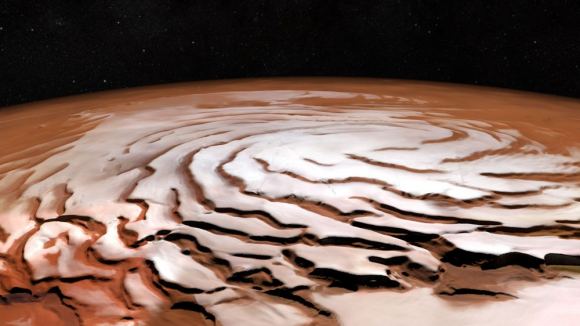Mars’s Northern Ice Cap is Surprisingly Young
If you’ve ever looked at Mars through a telescope, you probably noticed its two polar ice caps. The northern one is made largely of water ice—the most obvious sign that Mars was once a wetter, warmer world. A team of researchers from the German Aerospace Center (DLR) used that ice cap to make surprising discoveries … Read more


